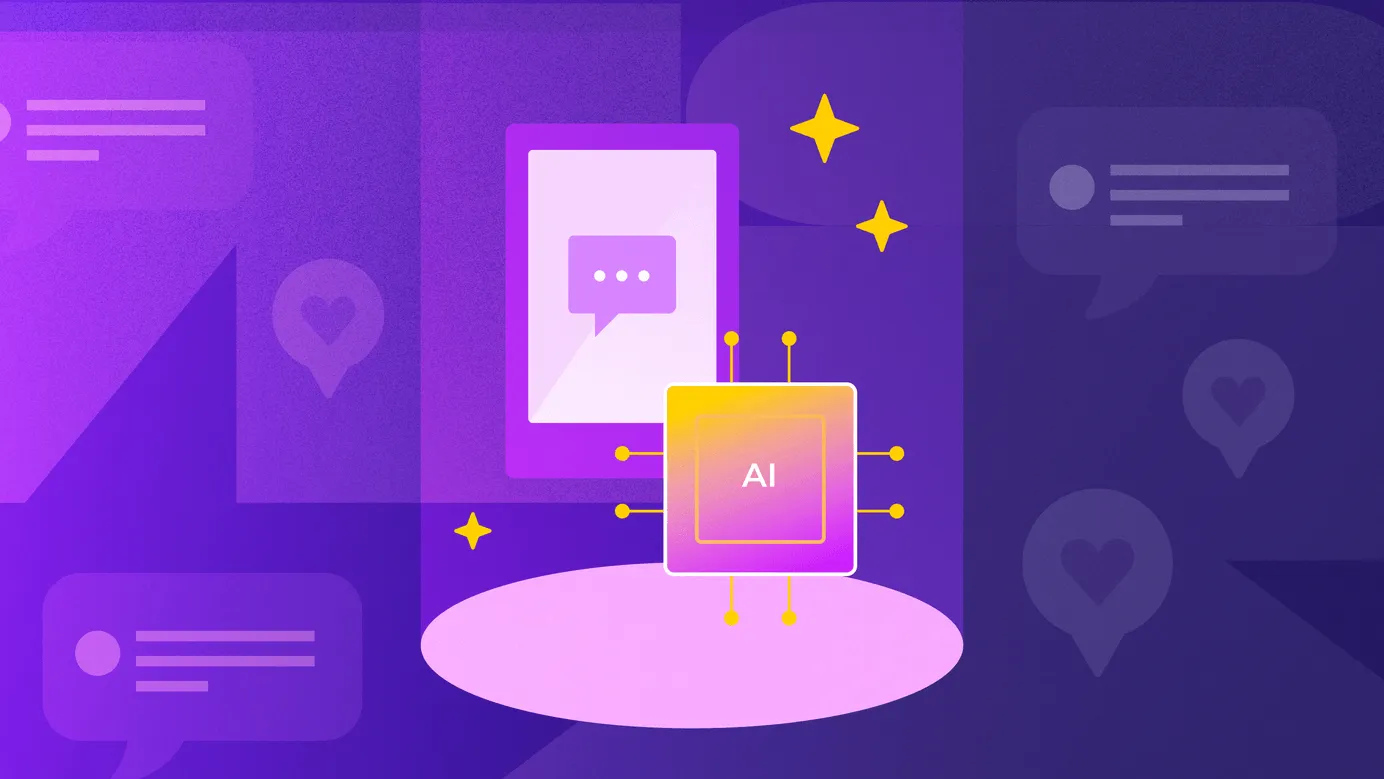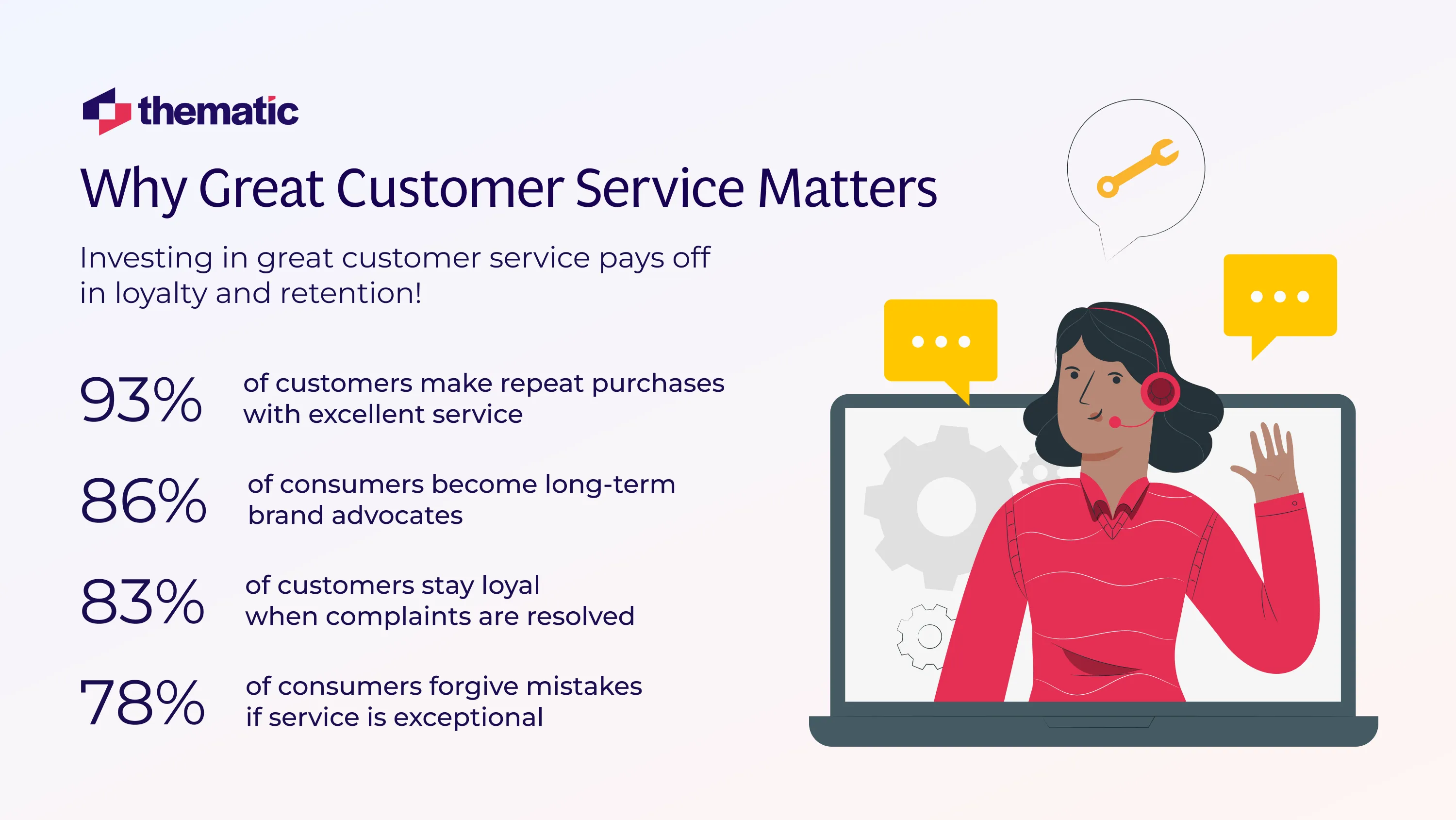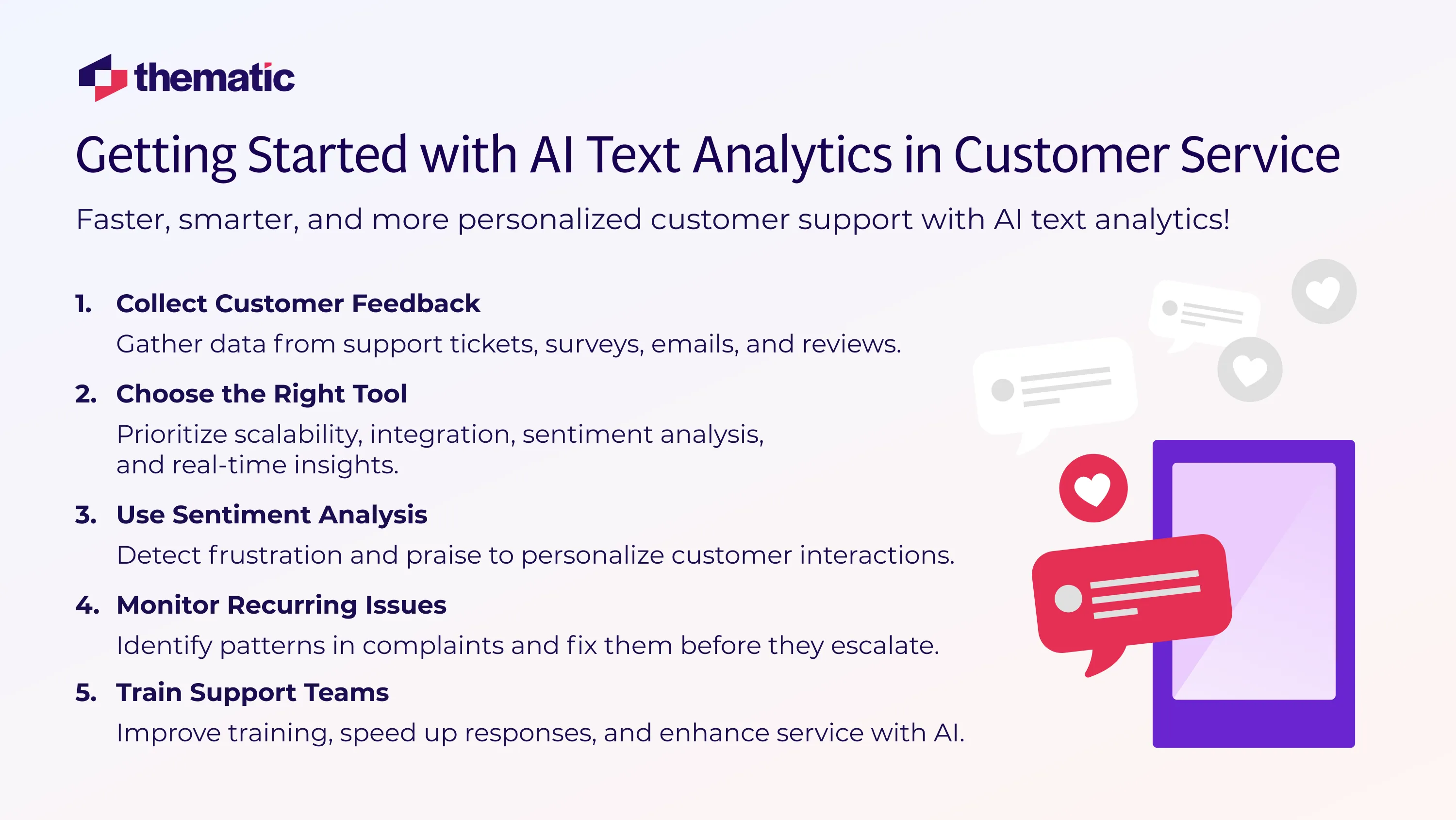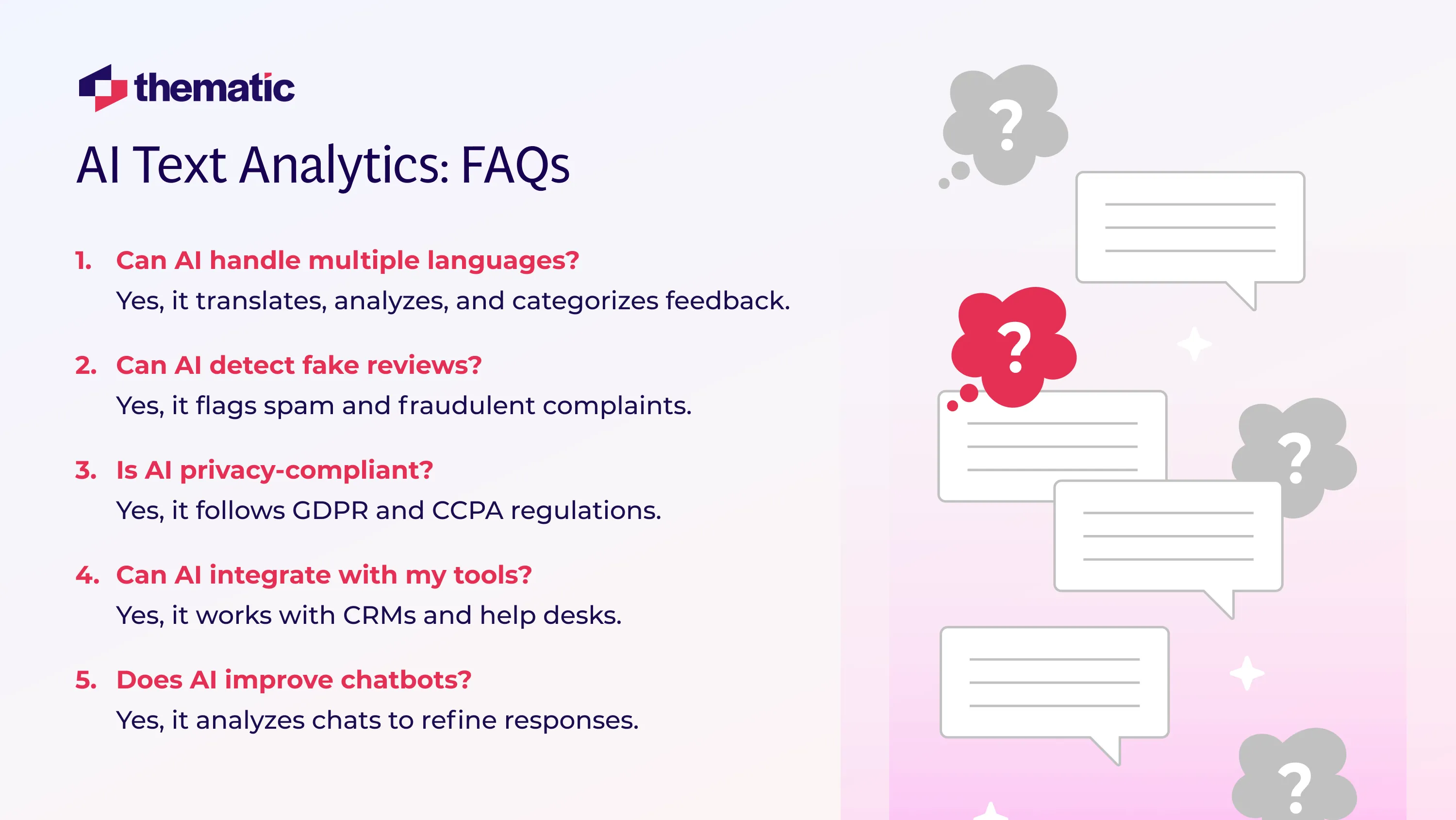
Learn how text analytics helps customer service by analyzing feedback, boosting satisfaction, and driving loyalty.

Ever felt frustrated after contacting customer service and getting no real help? You’re not alone.
Businesses today receive huge volumes of customer feedback—from emails and chats to surveys and reviews. But how do they make sense of all that data?
What is text analytics? Simply put, it’s about digging into unstructured feedback to uncover meaningful insights that improve customer service.
And before you think, “Nah, analyzing text is hard,” here’s the good news: AI-powered text analytics makes it easy to analyze customer feedback at scale. By analyzing support tickets, emails, and chat logs, it uncovers common issues, tracks sentiment, and speeds up response times.
So today, we’ll break down:
Ready? Let’s go!
Before anything, you might be wondering: Why AI text analytics matter?
Businesses receive tons of customer feedback every day, but most of it is free-form text—meaning it’s unstructured and difficult to understand.
Think about it—customer feedback comes from:
Without AI-powered text analytics, you struggle to code qualitative data and make sense of them.
And ignoring it comes at a cost:
When businesses use AI text analytics, they gain:
The demand for AI-powered text analysis is growing:
Where does your business stand?
Let’s talk about how AI text analytics can help your business.

Here are ways text analytics is helping improve customer service.
No one likes waiting for help. In fact, 90% of customers say an "immediate response" is important—and by "immediate," they mean within 10 minutes.
One of the biggest challenges in customer support is prioritizing urgent issues. Traditional ticketing systems rely on manual sorting, which means critical cases can get buried in a queue.
This is where AI-powered text analytics makes a difference.
How It Works:
Instead of automating ticket escalation, AI text analytics empowers support teams with data-driven insights, helping them prioritize the most critical customer issues.
That’s not theoretical—companies using AI-driven text analytics have reduced first-response times by 37% on average by improving issue detection and response prioritization.
Ever contacted a company when you were angry, only to get a tone-deaf response? It’s frustrating.
With AI-powered sentiment analysis, businesses can analyze text-based customer feedback to detect patterns in emotions—whether customers are angry, happy, frustrated, or confused—and use these insights to improve service.
How It Works:
Example: If a business notices that "long wait times" are frequently mentioned in negative reviews, text analytics highlights this trend, allowing the company to adjust staffing levels or streamline support processes.
Instead of automating customer interactions, AI text analytics provides businesses with deeper insights into customer emotions, helping them personalize service strategies based on real feedback.
Why does this matter? Because 80% of customers say their experience with a company is as important as the product or service itself.
If customers keep complaining about the same problem, are you fixing the root cause?
Without AI, businesses rely on manual review of support tickets, survey responses, and chat logs, which means patterns can be easily missed. AI text analytics automatically detects recurring themes, helping businesses spot persistent issues and resolve them proactively.
How It Works:
Vodafone used AI-powered text analytics to track repeated customer complaints and identify persistent service issues. Instead of responding to the same problem repeatedly, Vodafone used these insights to fix the root cause, significantly improving service quality and reducing the volume of support requests.
AI text analytics finds patterns human analysts might miss, saving businesses time and preventing frustration for both customers and support teams.
Customer feedback is a goldmine for product improvements—if you know how to analyze it.
Most companies collect thousands of reviews, support tickets, and survey responses, but without the right tools, extracting actionable insights can be a challenge. AI text analytics processes this data at scale, helping businesses identify key customer pain points and emerging trends.
How It Works:
In the case of Melodics, a music-learning platform, AI-powered text analytics analyzed customer feedback, helping the company refine its product roadmap. By identifying which features customers repeatedly requested, they prioritized improvements that had the greatest impact on user satisfaction and retention.
Instead of relying on guesswork, AI text analytics helps businesses make informed decisions based on real customer feedback, ensuring they stay ahead of customer expectations and build better products.
Support teams handle thousands of customer inquiries daily, covering issues from billing disputes to product defects. Manually reviewing and organizing this data is slow and inefficient.
AI text analytics helps by analyzing large volumes of customer inquiries and categorizing them into themes, making it easier to spot trends and recurring issues.
How It Works:
By identifying patterns in customer complaints, AI text analytics helps businesses
AI text analytics reveals the bigger picture, helping teams make data-driven decisions to enhance customer support.
And it works: support teams using AI report a 94% increase in productivity.
Did you know that a customer is four times more likely to switch to a competitor over a service issue than a product issue?
In fact:
Understanding why customers are unhappy is critical—but when feedback is spread across reviews, surveys, chat logs, and emails, it’s difficult to track trends manually.
This is where AI text analytics helps by detecting patterns in customer sentiment over time.
How It Works:
Instead of manually reviewing thousands of reviews or surveys, AI text analytics helps companies track sentiment shifts and pinpoint service issues before they lead to customer churn.
Customer loyalty is directly tied to service quality—93% of customers are likely to make repeat purchases from companies that deliver excellent customer support. And businesses that listen to customer feedback and personalize experiences see 71% higher customer loyalty.
But understanding why customers stay loyal—or why they leave—is challenging when feedback is scattered across reviews, surveys, and chat logs.
AI text analytics helps by analyzing sentiment and identifying trends in customer feedback.
How It Works:
Imagine an e-commerce brand analyzes customer reviews and support tickets to uncover recurring complaints about delayed shipments. Instead of waiting for customers to churn, the company proactively improves shipping times and updates customers more frequently—leading to stronger loyalty.
AI text analytics helps businesses understand why customers stay or leave, allowing them to make smarter, data-driven decisions to improve loyalty.
Training is critical—83% of high-performing agents say they receive the training they need, compared to only 52% in underperforming teams. But to be effective, training must be targeted to real customer concerns.
AI text analytics helps by analyzing customer feedback to uncover gaps in support quality, allowing businesses to refine training programs.
How It Works:
For example, if text analytics reveals frequent complaints about agents providing incorrect billing details, training programs can be updated to focus on billing accuracy and policy education.
By using AI text analytics to identify customer-reported service gaps, companies can optimize agent training programs, leading to higher first-contact resolution rates and increased customer satisfaction.
Customer support costs can be high, but inefficiencies in analyzing customer concerns often drive up operational expenses beyond just support teams. Businesses spend countless hours manually reviewing support tickets, surveys, and reviews—leading to slow responses, wasted resources, and higher labor costs across multiple departments.
AI text analytics helps reduce these costs by automating customer feedback analysis and reducing the workload for support agents, data scientists, and in-house analytics teams. Instead of manually processing data, teams can focus on strategic decision-making and customer experience improvements.
How It Works:
Companies that use AI-driven text analytics have reduced operational costs by improving issue detection, cutting resolution times, and reducing the need for extensive manual data analysis.
Data-driven decisions are more effective, and 83% of businesses now use AI to shape customer experience strategies.
Besides, recent research highlights that Large Language Models (LLMs) are rapidly becoming ubiquitous in text analytics research. The study further suggests that
"IS (information system) researchers can expand their research toolbox to include state-of-the-art LLMs by following structured frameworks."
This means businesses that adopt AI-driven text analytics can tap into cutting-edge technology to make customer-focused decisions faster and more accurately.
How It Works:
Here’s an example: A telecom company analyzes thousands of customer complaints and discovers that billing confusion is a top frustration. Using these insights, they simplify invoices and add proactive bill explanations, reducing complaints and improving satisfaction.
Instead of relying on manual reviews of feedback, AI text analytics provides data-driven insights, allowing companies to fine-tune their customer service strategies with confidence.
Let’s explore two real-world examples of companies leveraging Thematic’s AI-driven text analytics to transform their customer service.
The Challenge:
Watercare, New Zealand’s largest water utility, serves 1.7 million people across Auckland. In early 2022, two massive storms caused widespread infrastructure failures, leading to:
How Text Analytics Helped:
Using Thematic’s AI-powered text analytics, Watercare was able to:
One major insight revealed that customers were more frustrated by poor communication than the actual service failures. With this, Watercare:
The Results:
With Thematic’s AI-driven text analytics, Watercare turned a crisis into an opportunity to improve long-term service operations.
The Challenge:
LendingTree, a leading online loan marketplace, struggled to analyze 20,000+ customer survey responses every 90 days. Manually identifying recurring complaints was impossible.
How Text Analytics Helped:
Thematic’s AI-powered text analytics uncovered a major issue:
Using AI-driven insights, LendingTree’s team:
The Results:
Using AI text analytics, LendingTree transformed unstructured feedback into revenue-generating insights, improving both customer experience and operational efficiency.
Let’s not make life too complicated. Getting started the right way makes all the difference.
Here’s how to start with text analytics in customer service:
Gather customer feedback from support tickets, surveys, social media, emails, and reviews to get a complete view of customer concerns across all channels.
When selecting an AI-powered tool, consider:
AI-powered sentiment analysis identifies frustration, praise, and neutral responses, allowing teams to prioritize urgent issues and personalize interactions effectively.
AI text analytics spots patterns in customer complaints and identifies emerging issues before they escalate.
Use text analytics to:

AI Text analytics is something every business who’s serious with customer service should have. It makes qualitative data analysis a breeze.
With AI to analyze feedback, track sentiment, and detect patterns, businesses can improve response times, personalize interactions, and enhance customer loyalty.
Want to see how Thematic can help your business?👉 Experience text analytics in action—Try Thematic today!

Yes! AI-powered text analytics can analyze feedback in different languages using Natural Language Processing (NLP). It can translate, detect sentiment, and categorize feedback, helping businesses understand customers across different regions. This means companies don’t need to rely on manual translation or multilingual agents to spot customer concerns—AI does it automatically, ensuring consistent service quality worldwide.
Absolutely! AI text analytics can flag fake reviews, spam messages, and fraudulent complaints by identifying suspicious patterns in language, sentiment, and frequency. It catches copy-paste content, unusual posting behaviors, and misleading language, helping businesses focus on real customer concerns instead of getting distracted by misleading feedback.
It sure can! Most AI text analytics tools work seamlessly with CRM systems, help desks, and ticketing platforms like Salesforce, Zendesk, and HubSpot. This means you can automate ticket prioritization, analyze sentiment in real-time, and extract key insights—without changing your existing workflow.
Join the newsletter to receive the latest updates in your inbox.